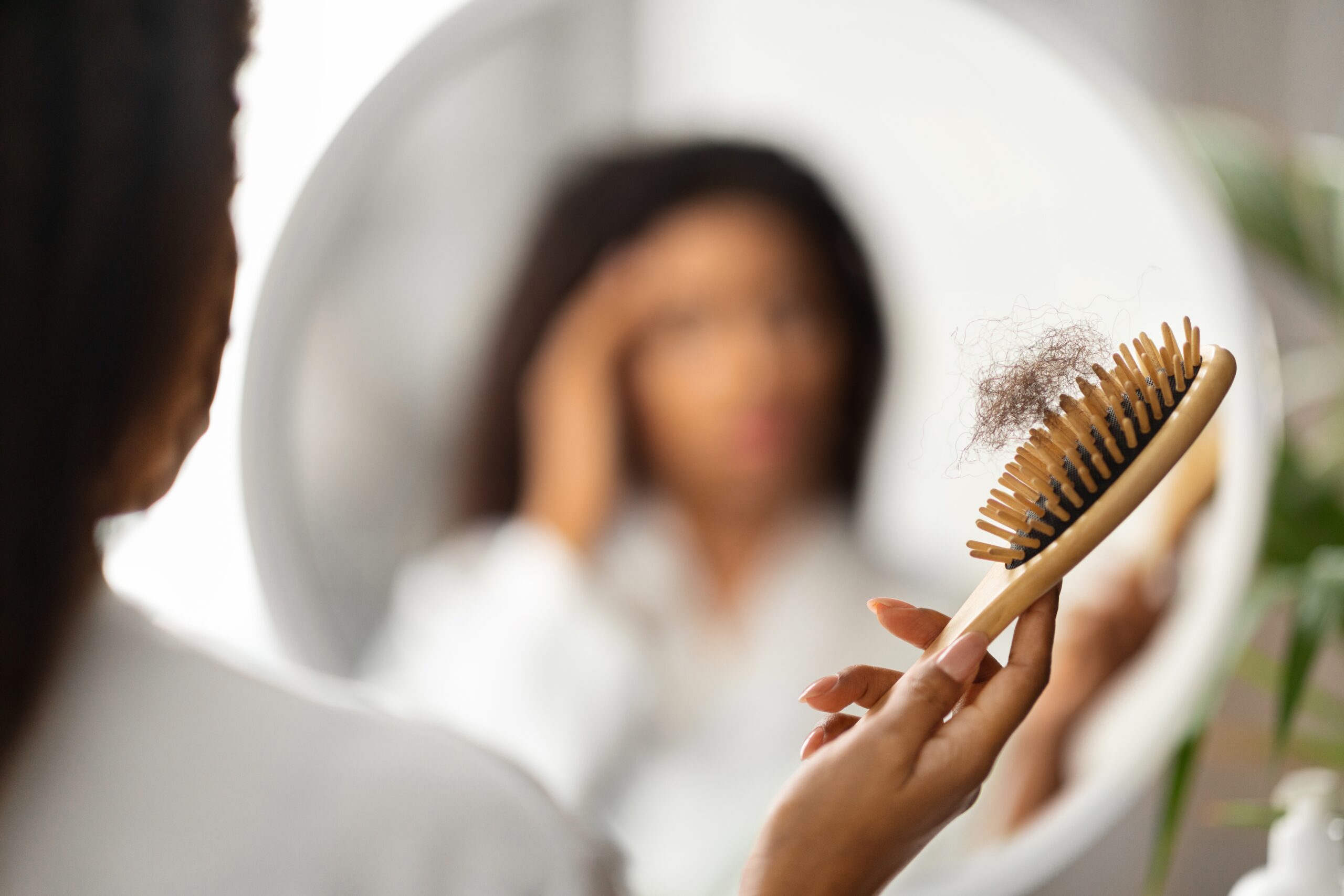Could new social movements bring about significant change to our view on gender equality
by Bryan Silver
Unlike some social media movements of the past that ultimately fizzled rather than fueling real change, the #MeToo movement has definitely made its mark on our collective consciousness, but to what end? Will we live in a world without sexual harassment, one where women stand on equal footing with men…or is this creating a deeper chasm between the sexes that will remain long after the Twitter and Instagram posts play out? This truly is the big question, and it’s still unclear as to where we’re headed as a society—quite possibly because we’re not all moving in the same direction.
Although it can seem counterintuitive, determining the direction in which you’re going can often be accomplished by looking back to where you’ve been. Such retrospective analysis can reveal a linear pattern that not only tracks your progress but projects your approximate destination—it certainly works well with changing points on the compass, but can it influence the course of cultural change?
Hashtag Activism: When Social Movements Take to Social Media
In today’s world, one of the most effective ways to show support of an idea or cause is to include your hashtag of choice—the belief being that we can make a difference through a shared discussion.
#BLACKLIVESMATTER
As stories of police brutality toward people of color mounted in 2014, conversations on Twitter began using several hashtags—ultimately settling on this succinct and powerful statement. Tweeted over 9 million times in 2015 alone, #BlackLivesMatter quickly grew beyond the confines of social media to become a call across the U.S. for social justice and racial equality.
#LOVEWINS
A celebration of marriage equality, #LoveWins gained traction following the U.S. Supreme Court decision in 2015 legalizing same-sex marriage. Tweeted out by President Obama, the hashtag went viral with 6.2 million tweets in the first day—soon to become a rallying cry for members of the LGBTQ community in general.
#WHYISTAYED
In 2014, video footage surfaced that appeared to show Ray Rice, an NFL running back for the Baltimore Ravens, punching his then-fiancée, Janay Rice, in a brutal act of domestic violence. Public conversation quickly turned to social media, discussing why victims stay in abusive relationships. As a response, writer and domestic abuse survivor Beverly Gooden first tweeted #WhyIStayed in an effort to “change the tone of the conversation.” The hashtag began to trend immediately and was shared more than 46,000 times the first day alone.
#PRAYFORPARIS
In just one year, Paris was the epicenter for two major terrorist attacks—the first being a shooting at the offices of the satirical publication Charlie Hebdo and then, in late 2015, several coordinated attacks of both shooters and suicide bombers occurred across the city in one day. The world showed their support on social media with the hashtag #PrayForParis, ultimately being uses over 5.7 million times on Twitter and 4.8 million times on Instagram in just the first 24 hours.
Looking Back, Are We in a Better Place?
It’s undeniable that certain aspects of our cultural attitude toward sexual harassment have changed greatly in just a matter of months. What may have been tolerated as marginally acceptable only a year ago is now viewed by many as abhorrent behavior. Coincidentally, it was a little more than a year ago that we found ourselves as a society reflecting on the anniversary of a related subject; a seminal event that occurred in October 1991 and brought the ugly reality of harassment onto the national stage and illuminated it with an introspective spotlight.
The event was Anita Hill testifying in front of the Senate as to what transpired between her and then-
U.S. Supreme Court-nominee, Clarence Thomas. It was with this 25th anniversary of the hearings that inspired our cover story in Living Safer volume 8: edition 2— analyzing what actually had, and had not, changed over the years in regards to the sensitive subject. The article conveyed that—while awareness, identification and acknowledgement of harassing behavior have greatly increased over the years—fundamental, positive change was lacking (you can read the story here).
Yet, a mere 18 months later, we now live in a post- Weinstein world. Attitudes and actions toward claims of sexual harassment are far different, and the outcomes for those accused are rarely as favorable as they were for Justice Thomas. There no longer exists protection within the proverbial “boys club” and excusing such actions as permissible is not to be tolerated. But what are we doing to actually change the situation? What is the future of social behaviors between men and women in the workplace and the world? To truly understand the potential path of such a fundamental shift, it’s best to begin by looking at those who would benefit most from a betterment of the mainstream mindset.
New Commission Looks to Change Old Habits
Today, the topic of sexual harassment is viewed differently than it was when Anita Hill first stepped onto the Senate floor. People are more aware of the toxic dynamic, there are more available programs to help those who are victims, and there exists more training opportunities in the workplace to prevent such behavior from happening in the first place.
25 years later, Anita Hill continues to play an active role in remedying the predicament faced by many women, stepping forward to chair the newly formed Commission on Sexual Harassment and Advancing Equality in the Workplace.
“I’m proud to be leading this newly-formed Commission on a long overdue journey to adopt best practices and to create institutional change that fosters a culture of respect and human dignity throughout the industry,” Hill said in a statement to the press. “We will be focusing on issues ranging from power disparity, equity and fairness, safety, sexual harassment guidelines, education and training, reporting and enforcement, ongoing research and data collection…this moment presents us with an unprecedented opportunity to make real change.”
Formed to combat Hollywood harassment and abuse head on, the Commission is a coalition of top entertainment execs looking to lead by example. Key participants include Lucasfilm president Kathleen Kennedy, CBS chairman/
CEO Leslie Moonves, Netflix chief content officer Ted Sarandos, SAG-AFTRA president Gabrielle Carteris and Disney chairman/CEO Bob Iger.
Other Equality Movements that Are Making a Difference
50/50 BY 2020
The concept of gender parity is not new by any means, but declaring a deadline to the goal’s completion certainly puts a new emphasis on the effort. Simply put, the idea is to extend the world population’s gender mix to a multitude of industries that have notoriously been known as “men only”— this includes Hollywood, the political arena, the medical community and the corporate world.
STEP IT UP
Sponsored by UN Women, an organization offshoot of the United Nations that fights for gender equality around the globe, this effort asks governments to make national commitments to address the challenges that are holding women and girls back from reaching their full potential.
EQUALITY NOW
Believing that social change often begins with legal change and political will to enforce the law, Equality Now is relying on an international network of lawyers, activists and supporter to hold governments responsible for ending legal inequality, sex trafficking, sexual violence and child marriage.
Shouldn’t a Movement Called #MeToo Apply to All Women?
While the movement was never meant to be exclusionary in any way, many point to the fact that, to date, it has mostly involved people of prominence—mainly politicians, powerful businessmen,
TV personalities and male inhabitants of Hollywood. And it’s not just the accused who fall into this camp, either. Looking at those who have stepped forward with claims of misconduct, many are women who wield a fair bit of power, wealth and celebrity themselves. But what about those who do not move in such circles, shouldn’t the movement be of benefit to them as well? Does #MeToo apply to all the restaurant servers, the office workers and the housekeepers who fall victim to sexual misconduct, especially by someone who is also not of high- profile stature? According to a recent poll conducted by the well-known, independent surveyor Quinnipiac University, as many as 60 percent of all women have experienced some form
of sexual harassment—yet their individual stories are not making headlines, not evoking hashtags, nor are they being heard. It is an unfortunate point to make, but it’s hard to deny that the #MeToo movement has done little to draw attention to the plight of the poor and the powerless.
Some industries, such as hospitality and food service, have always had a reputation for being rife with sexual overtures that teeter on and often traverse the line of harassment—bad behavior that comes from both coworkers and customers alike.
But there are some careers that see more than their fair share of sexual misconduct which might surprise you. For instance, women who work in retail—especially in clothing stores—account for the second-highest rate of sexual harassment after hospitality and food service. And in 2012, the international organization Human Rights Watch did a report on sexual violence involving farmers and field workers. In interviews, almost all stated that they had either directly experienced or witnessed sexual harassment.
Corroborating evidence exists in an earlier survey of Central Valley farmworkers that found as many as 80 percent of female workers claimed to have been sexually harassed on the job.
Unfortunately, such data does more than make the point that the problem goes beyond affluent or influential women in certain industries or social circles—all too often, sexual harassment affects those most who simply can’t afford to lose their jobs at any cost. Those who fear retribution from management or a bad referral moving forward are often willing to tolerate what no woman should. Often, these women are immigrants, women of color, or ones with little money or opportunity to pursue legal action. Hopefully this will change as the movement evolves and more resources are put toward helping such individuals.
Time’s Up Promises to Provide for those Who Need Help the Most
Created by more than 1,000 powerful and affluent Hollywood insiders to help combat the disparity experienced by working class women when it comes to addressing sexual harassment in their workplace, Time’s Up is a relatively new campaign that positions itself as a “sisterhood” backed by big-name members, such as Reese Witherspoon, Jessica Chastain, Selena Gomez and Meryl Streep.
While essentially run by volunteers and multiple working groups, the movement is driven by a single mission statement—to support those women, men, people of color and the members of the LGBTQ community who have suffered from sexual harassment, yet do not have either the funds to pursue legal recourse or sufficient access to media platforms upon which they can tell their story. To this end, the movement has created a grassroots GoFundMe campaign to establish a legal defense fund that will be administered by the National Women’s Law Center—a nonprofit organization that advocates for women’s rights through both litigation and policy initiatives. While their initial goal was to raise $15.5 million, that number was surpassed in the first few weeks and continues to grow.
While no one denies that the #MeToo Movement has started—and continued—a very public conversation on sexual harassment and sexual assault in the workplace and elsewhere, there are some critics who claim that it has yet to inspire a workable solution. Time’s Up promises to do just that, as their mission is to go beyond words and apply action in an effort to proactively shape a new social paradigm. Initially inspired by a letter of support from the Alianza Nacional de Campesinas (The National Farmworker Women’s Alliance), the campaign is intended to offer support to any and all who feel they have been marginalized in the workplace.
“To receive a letter on behalf of 700,000 women working in the fields, women who put food in our supermarkets, on our tables, standing with us—it was such a moment of modeling what we need to be doing in our larger society,” commented America Ferrera during a TODAY show episode. “It was such a signal to us that we couldn’t do anything but respond. And not just with words, but with real action.”
At a recent 2018 Makers Conference (a yearly event sparked by the 2013 documentary Makers: Women Who Make America), Time’s Up panel member Rashida Jones made the point that “the cornerstone of the Time’s Up movement is intersectionality, which means addressing the way a person’s gender, race, socioeconomic
class, sexuality, and other characteristics can result in different forms of or circumstances surrounding the treatment they experience in the workplace.”
‘Dear Sisters’…
On Jan. 1, 2018, a full-page ad ran in the New York Times. It wasn’t marketing a product or service, but an idea. It bore an important message that did more than speak to a group, it spoke to individuals on a personal level. The open letter professed that the systemic sexist culture found in the American workplace has stayed past its welcome. That the days of inequality are numbered. Basically…time’s up.
The letter began with “Dear Sisters,” and ended with a call for solidarity, both signaling that what Time’s Up truly hopes to do is usher in an era of unity. If you’d like to read the letter as it ran in the Times, see the full list of women who signed the letter or read the original letter from 700,000 female farmworkers, you can do so at www.timesupnow.com.
Where Does this Leave Us? What’s Next?
If this conversation is to evolve into a true movement, one where lasting cultural change is brought about—it needs to engage the base on a fundamental level. We’re talking about the average man on the street as well as the woman on the street. If they have differing views on the topic, then the solution will need to bridge that gap. It cannot just be about male sexual misconduct, we must also examine why the female reaction has often been to downplay events or look the other way when it affected other women. This is not just about men vs. women. It’s about civil interaction between people, regardless of gender. It’s about respect for each other and an inherent responsibility to treat people how we ourselves would like to be treated.
Up to this point, many have simply been focused on maintaining the momentum of the movement—acknowledging that it needs to move forward, but unsure as to whether there is an “appropriate” pace.
Others question the continuing accusation of male perpetrators with little in the way of due course of law, wondering if there will ever be a time of forgiveness, a time of reconciliation, a time when we can move past the pain and the limits of acceptable male-and-female professional interaction can be rewritten.
In some ways, this might be a dilemma that must be addressed on an individual level. It’s hard to imagine that one voice could aptly put into words how everyone feels on the subject. Yet during a CBS This Morning interview with Oprah Winfrey on the subject, America Ferrara might have distilled the feelings of many women while commenting on the movement and its progress moving forward; “Speaking of this moment, as a culture, we’ve gone from not listening, hearing or believing women,” said Ferrara, “…and how were we going to skip over the whole part where women get to be heard and go straight to the redemption of the perpetrators?” she asked. “Can’t we live in that space where it’s okay for perpetrators to be a little bit uncomfortable with what the consequences will be?”
Do not doubt that there will definitely be consequences for those who commit such actions. But the uncomfortability should apply to all of us. We should all shoulder some responsibility for not rectifying this social ugliness sooner. To move forward, we all need to come together and work on a solution. While the next step is consensus, we must temper our expectations with patience. We must remain focused on our goal, but realize that real change may take time.








Leave A Comment